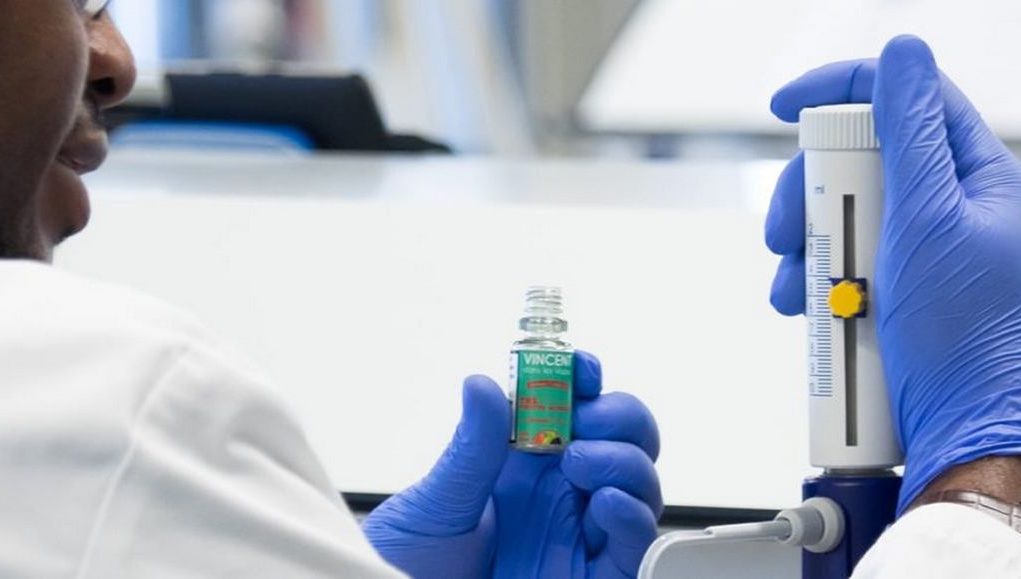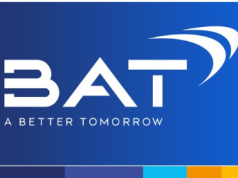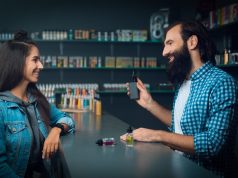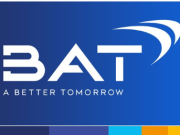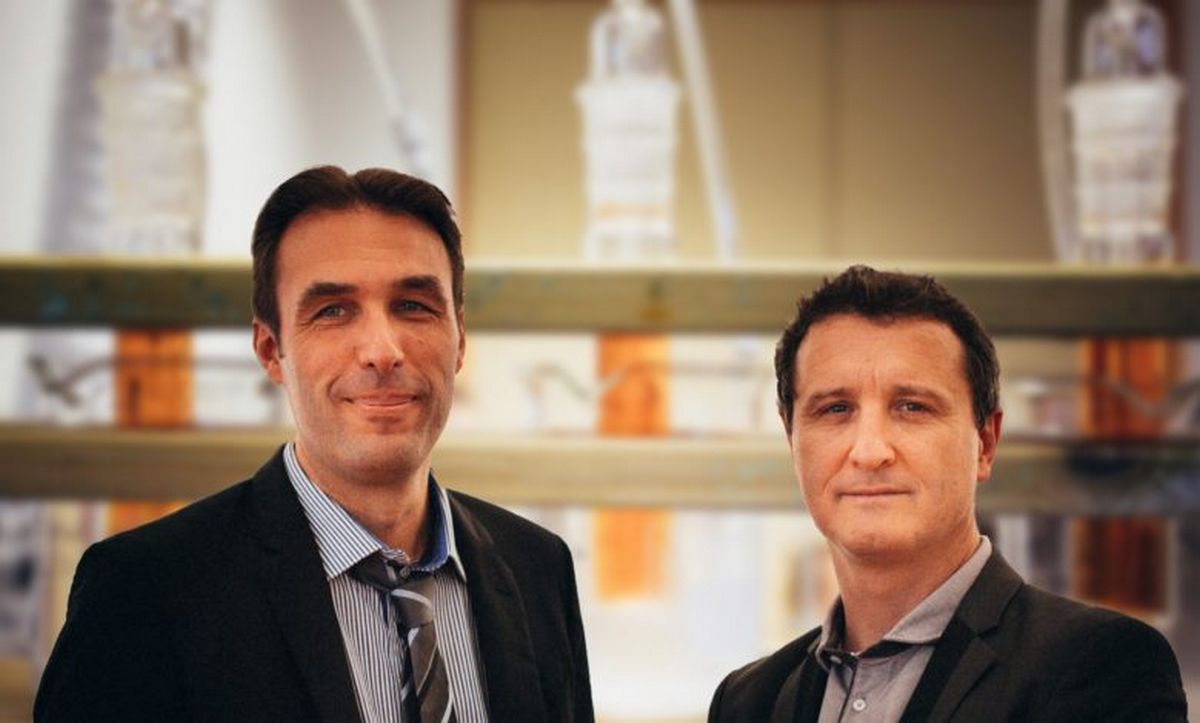
Vincent Cuisset and Charly Pairaud, welcome. Let’s start with the introductions.
Vincent Cuisset: I’m president of VDLV and director of Ingésciences, and I’m 43.
Charly Pairaud: And I’m president of Ingésciences and director of VDLV. I’m 46.
Vincent, how did you first come into contact with the e-cigarette ?
V. C.: It was during a poker night in 2010. I had a pair of queens in my hand, and I was feeling pretty confident so I raised the stakes. And that’s when one of my opponents – but a friend nonetheless – pulled an e-cigarette from his pocket. It made me lose my cool… and the game.
What inspired you to start VDLV ?
V. C.: I was at a turning point in my career at the time, and I took the risk of throwing myself full-length into the vaping business. During a period of unemployment, I spent a year and a half working full time on R&D to find out if there was a way of manufacturing a range of French e-liquids myself, based on commitments that were different from what was available on the market at the time.
Little by little, I built a set of specifications for selecting vape-quality flavours, meaning those intended exclusively for inhaling. I created a range of some twenty flavours with exclusively natural aromas and, by tweaking my business plan, I set up an initial production, analysis and packaging circuit. That’s how VDLV and the Vincentdanslesvapes.fr online store were born in September 2012.
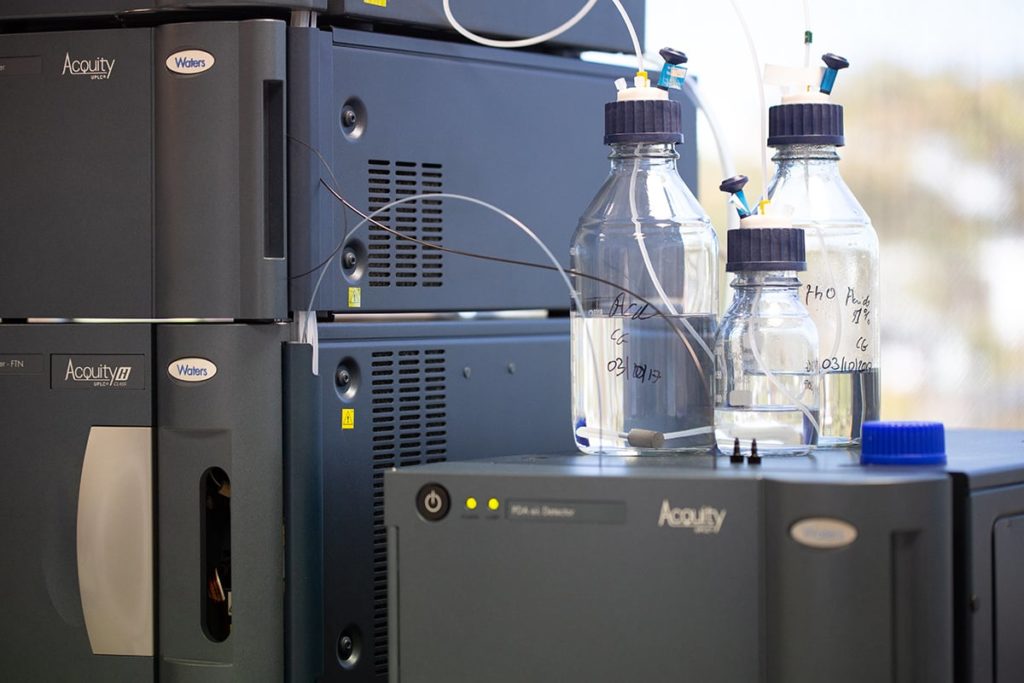
In your opinion, what enabled VDLV to skyrocket ahead of other competitors in its early years ?
V. C.: Looking at the comments posted at the time on the leading e-cigarette forum, I would say that it was mainly authenticity, flavour quality and our natural aroma approach. We were also one of the first companies to talk about end-user safety through raw materials traceability and product testing and analysis. Moreover, as soon as we had some cash, VDLV’s first investment was an HPLC (high performance liquid chromatography) in 2013.
How do you define VDLV’s identity ?
V. C.: VDLV’s values hinge on six concepts: permanent innovation, commitment to quality, stringent selection of vaping flavours, French production, plus environment-friendliness and the circular economy. At the same time, we’re also committed to the independent business sector to advance the debate on vaping safety.
How do you share your in-house roles with each other ?
V. C.: We work on our business development strategy and growth driver analysis together. Of course, we each have our own areas of expertise. Charly deals more with the technical side, innovation and industrial engineering, communication and lobbying. As for me, I’m in charge of financial and administrative management, analytical expertise, quality management and human resources.
Hearing a vaping company talk about lobbying is a rare thing.
C. P.: Our lobbying effort dates back to 8 October 2013, the day the European Parliament voted in Strasbourg. We travelled there with all the company’s employees to demonstrate. Another French e-liquid manufacturer and us were the only companies to do this. When I saw people like Renaud de Boudemange (one of the founding members of Cace, an e-cigarette working group, ed.) or Brice Lepoutre (then President of Aiduce, ed.) speaking out for the vapers, I thought it was time to add our voice to theirs. If we professionals spend our time saying that vaping reduces risks without providing technical elements to support our narrative, the political commitment will obviously be weak. So one of my main motivations – Vincent gave me complete freedom to do this – is to technically back our claims. That’s what I’ve been doing since my involvement with Cace and then with Fivape (Charly Pairaud is a member of Fivape’s board of directors, ed.).
VDLV is at the cutting edge of e-liquid safety concerns. What processes have you implemented ?
V. C.: We have a very precise specification which we enforce on our raw materials suppliers. It evolves according to the results of our research on the toxic potential of inhaled molecules associated with their vaporization performance.
C. P.: Just for the record: like cigarettes, vaping has come under a lot of chemical analysis, but this can’t be done without first establishing physical parameters. From the outset, we looked at the thermodynamics and fluid mechanics involved. Chemistry is meaningless if the physical parameters are not established, researched and calibrated.
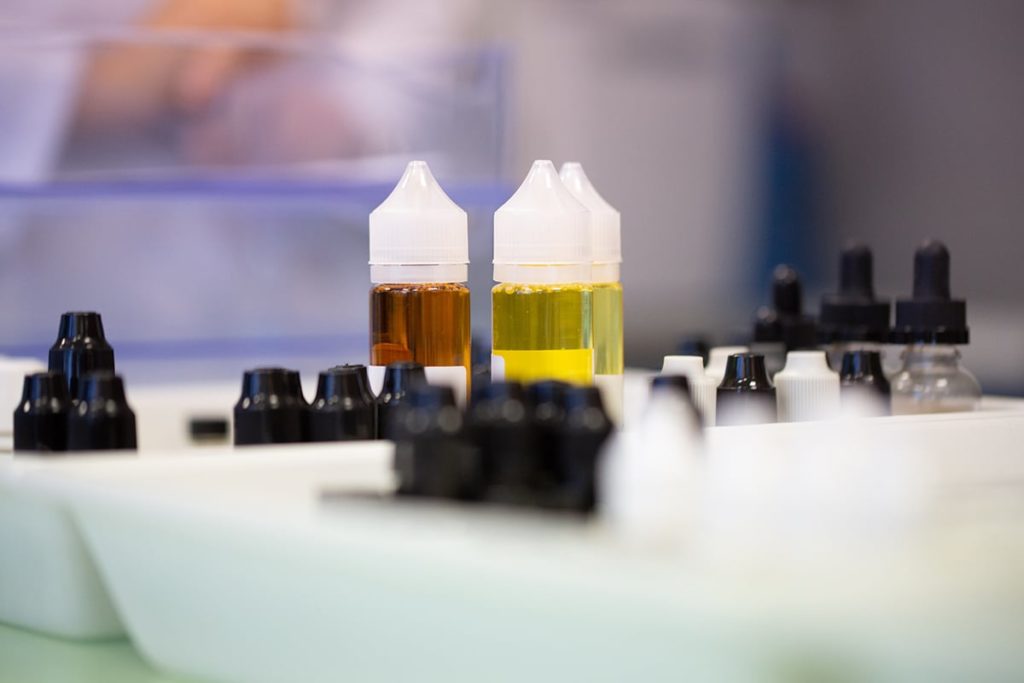
In concrete terms, what do the physical parameters actually include ?
C. P.: Physical parameters merely state, for instance, that a steak has burnt in the pan without specifying whether it was cooked over a high heat, with a blowtorch or simply on a hot plate. To say that the steak is noxious without specifying how it was cooked doesn’t make sense. The same principle applies in vaping. If the physical parameters haven’t been established, a chemical conclusion has no reliable scientific interpretation. Vaping critics use physical approximations to say: “See, vaping is harmful”. No, vaping reduces risks when the physical parameters are right, but if the physical parameters are unsound, the chemical parameters will also be unreliable.
The use of sucralose in e-liquids is a sensitive subject. What’s your position ?
V. C.: We had an intuition from the beginning and the bibliography compiled by the Ingésciences study, which will be published in early 2020, convinced us that sucralose degradation products are highly toxic. This is a subject of concern for us because it directly impacts consumer safety. In our opinion, the best way to safeguard a smoking cessation solution is to give it all the testing credentials, both for our brands and those of our partners. Vaping has been the subject of much criticism regarding its safety from the outset and there is, along with sucralose, a loophole in the system that can simply be avoided. We understand the appeal of sucralose, but we deplore the rush towards increasingly sucralose-intensive e-liquids. Fortunately, we are seeing more and more specialist stores becoming aware of the danger of these compounds and keen to preserve their customers’ goodwill. As a result, they’re reluctant to sell liquids that are too sweet.
What are the dangers of sucralose inhalation ?
The study conducted by Ingésciences will provide some answers to this question. But we already know that one of the degradation products of sucralose (3-MCPD) is suspected to be a human carcinogen (CMR 2B) when ingested, so it is more than likely that it is also qualifies as one when inhaled.
So is sucralose totally banned at VDLV ?
V. C.: Yes, totally.
Are you going to advocate its ban in the Afnor standard ?
V. C.: We will attempt to make people understand the risks that sucralose can impose on the market. The independent vaping business has to understand this danger, which I believe Big Tobacco already has, by avoiding it in its liquids. We are now convinced that an inhalation risk exists, and we can make quality liquids that taste good without sucralose.
C. P.: It’s all about the industry’s responsibility. That’s the hand of cards we’re putting on the table with the study published by Ingésciences.
In 2016, Vincent dans les Vapes and CirKus were the first brands to achieve Afnor certification. Since 2017, VDLV’s analysis lab has won accreditation by Cofrac. What’s the driving force behind these processes ?
V. C.: Since the beginning, we have been highly sensitive to the concepts of constant quality improvement and the quest for optimal product safety. We have built a quality management reference system that is evolving constantly. This quality management policy is based on a number of concepts: satisfying customer needs, continuous process improvement, consumer safety, enhancing staff working conditions and communicating about our business.
Your company has also been awarded the Mon entreprise bouge (My Company on the Move) label. What does this label mean and why did you go for it ?
C. P.: It’s a way of promoting sport in the company but it’s also about reducing risks. The label also represents values like self-respect and respect for others, team spirit, cohesion, personal development and well-being. We work to improve our staff’s personal equilibrium, stress, mental health and musculoskeletal disorders. In concrete terms, this means warm-up and stretching sessions every morning before our employees start work.
V. C.: We also offer free yoga and Pilates classes several times a week. This approach is part of another, more global one, namely our commitment to CSR (Corporate Social Responsibility, ed.) for the company. This involves the benefits provided to our employees such as sports, but also measuring our environmental impact with the use of recycled bottles for our products or the fact that we promote the development of the circular economy by working with local partners.
C. P.: We are aligned with the 17 UN sustainable development goals applying to this issue (sustainable development goals are the roadmap to a better and more sustainable future for all, ed.).
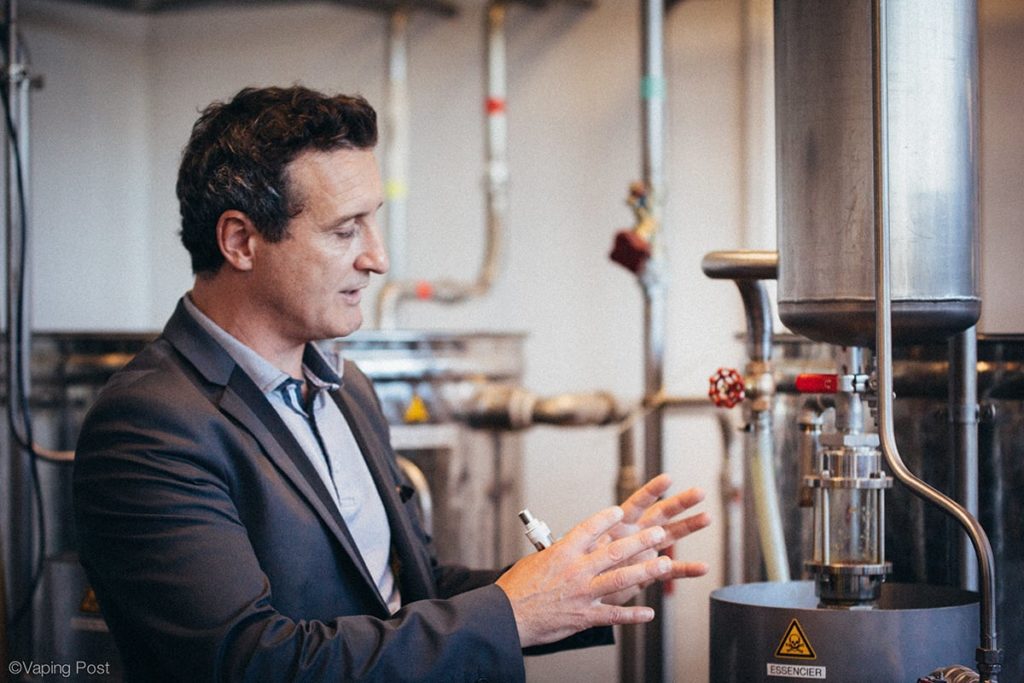
Let’s move on to e-liquids : you regularly release new additions to your range. What is the process for creating a VDLV e-liquid ?
V. C.: During VDLV’s first three years we concentrated on developing single- and dual-flavoured e-liquids. It took us some time to come up with initial selection specs for the flavours to be inhaled and to identify all the characteristics in our flavour library. We also had to understand the aromatic compound degradation phenomena in play during vaporization and analyse the properties and interactions of aromatic groups. This took the preparatory work that today allows us to create more complex and balanced recipes.
Inspiration comes from multiple sources. There’s feedback from our customers, our sales team, and our development department’s creativity. The work done by this division is vital since it focuses on achieving the aromatic notes that will, for instance, stabilize a composition or embellish a base note like length in the mouth, or a heart note. And let’s not forget the taste and analytical tests performed at the various stages of e-liquid development to monitor how they change and age.
How do you keep in touch with market trends ?
C. P.: To do this, we’re lucky enough to have a local technical-sales force of about ten people connected with VDLV and Ingéciences. They come regularly for training and information and are a link with the marketing and communications departments and our daily market watch is supplemented by their in-field intelligence. In addition to this, central services monitors the market and our export department analyses international market trends. We try to combine these dynamics with our creative drive. However, we don’t embrace all market trends at first glance: we always take the time to probe and test them to see whether they have long-term potential.
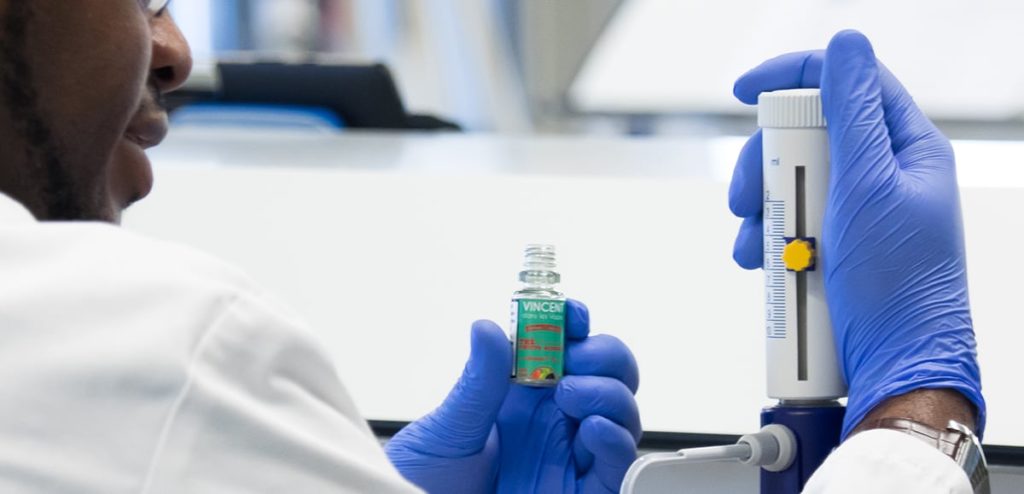
Does Ingésciences play a role in the creative process ?
C. P.: The laboratory acts upstream by qualifying or disqualifying flavours, which are either already in vogue or new. Ingésciences analyses all of this and provides VDLV with a scientific guarantee. It also provides this service to other businesses, but it learnt to do it with VDLV. Sometimes VDLV also comes up with new analysis-related questions for the R&D department, either about olfactory marketing or concerns involving molecular degradation.
This brings us to nicotine salts, a major market trend. Why did it take you so long to notice them ?
V.C.: When we became interested in nicotine salts, we were already focusing on our French nicotine production. Given the complexity of the subject, we took the time to look at the different types of salts, the behaviour of the acids during vaporization, the impact on vapers, the analysis methodologies involved, and optimal production methods. For us, using nicotine salts only made sense if they were made from nicotine produced in France from locally-grown tobacco. And that’s now been accomplished !
C. P.: Our nicotine salts were released in September under the Vincent dans les Vapes and CirKus brands. Not all our products are involved, since we intend to essentially focus on a limited range of some fifteen flavours.
At hardware level, a lot of competitors are climbing aboard the vape pod bandwagon. Why aren’t you ?
V. C.: We haven’t done it so far because we can’t cover every base. But we do get demands for pods, both in open and closed systems, and we have projects in the pipeline. We are convinced that pods are effective in smoking cessation, but our main concern remains the significant environmental impact of certain types of pod. We are not in a hurry. The fact that some of our competitors have gotten into them doesn’t mean we have to suddenly release our own. We’re taking time to think about it.
What are your best-sellers from your ready-to-vape brands ?
V. C.: Vincent dans les Vapes has tobacco flavours like Hampton and Hudson. Its mint flavours include Ice Mint and Fresh Mint. Apple, Strawberry, Pear and Pineapple stand out as favourite fruit flavours. For CirKus Authentic, it’s RY4 and French Tobacco for the tobaccos and Mango Raspberry and Blackcurrant Ice for the fruity ones. The CirKus Wanted range includes Sweet and Gourmet. Black CirKus’ more complex assemblages include The Bearded Beauty and The Strongman.
Did these flavours meet with the success your expected when they were released ?
V. C.: We have a flavour design pipeline as well as a panel of testers, and we sometimes experience disappointment
Could you mention a few of them ?
C. P.: Our cucumber flavour was a historical disappointment, and it’s amusing to see that we must have arrived on the market too early with this flavour, because now it’s doing well. So one setback was releasing it too early and the other was then deleting it from the range (laughs). The flavour was called Préambule and it was aptly named (smiles).
And what about the DIY range ?
V. C.: In the CirKus Eccentrics range, our best-sellers are El Nougat and Kiwi Strawberry Mix. And let’s not forget our shortfills’ offering, which is also doing very well.
You provide a support toolkit to outlets. What’s in it ?
C. P.: VDLV provides a whole range of tools and services to our professional customers, whether it’s for promoting our products, providing advertising media or even support solutions for in-store merchandising. Last May, we also launched LemonDays (exclusively in France for now).
How can French professionals participate in LemonDays ?
C. P.: We consult our local distribution network and talk to them about the concept. They can then sign up although there are a limited number of places for organisational reasons. LemonDays are held on Mondays because they’re usually a day off for specialist shops, but not this Monday (smiles).
V4 of the Juke-Vapes machine came out in October 2018, what stage is the roll-out at? What does it contribute to a store ?
C. P.: V4 is the culmination of feedback from the field and in-store practices. The Juke-Vapes was initially rolled out mainly in England, since this practically minded country immediately saw the handy, hygienic and economic advantages it delivered. This version features 20 flavour points for the same footprint and it is used with disconcerting ease. LED lights provide a fun side, it’s customizable and allows you to collect data. In a nutshell, it delivers a truly successful customer experience.
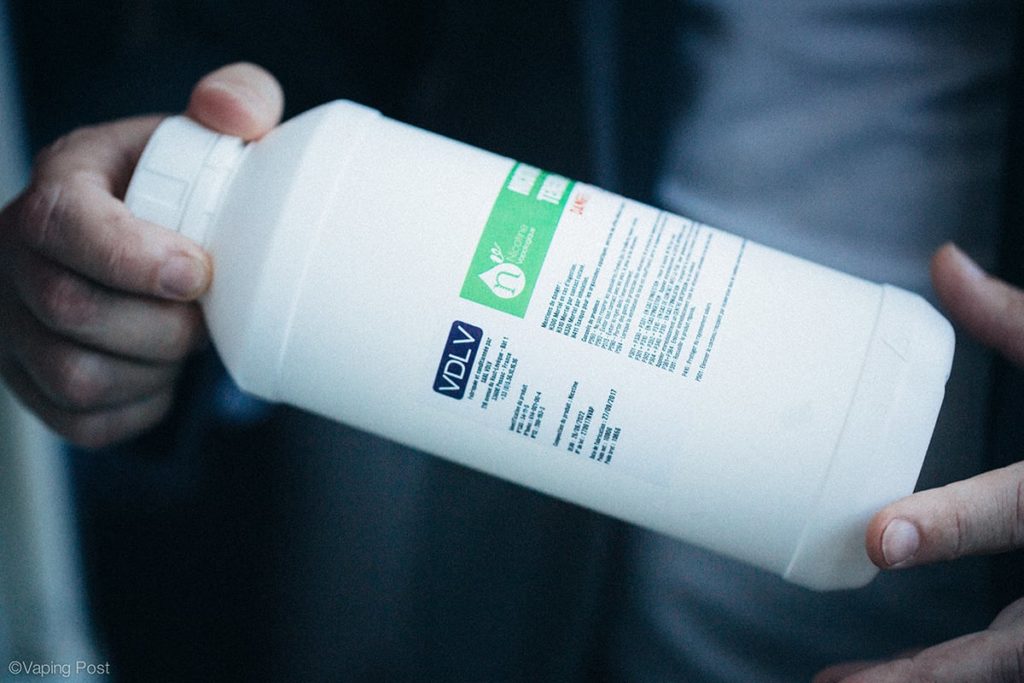
You produce the Vaping Grade Nicotine from French tobacco plants, so you’re committed to a “Made in France” rationale. In your opinion, is vaping a new industrial and agricultural promise for France ?
C. P.: Well, it’s an encouragement and an understanding of what’s at stake at the regional level, that’s for sure! We’ve supported farmers and tobacco growers and they’re highly motivated since they’re realising that progress is pointing their way and are reassured at the idea of working with a company like VDLV. They’ve visited our facilities, checked out how we work and really appreciate being able to do so. This creates a local ecosystem that we hope is on its way to going nationwide. What we’ve seen is that while the regions, and even the institutions, have understood this very well, it’s not at all recognised nationwide and we regret this lack of consideration. We need to understand that Vaping Grade Nicotine involves three main production stages.
The first is extraction, and it relies on French know-how from some very fine companies which provide us with their high-level expertise.
The second involves the performance provided by the purest possible nicotine produced using a green chemistry process.
Finally, the third stage involves recycling the by-products. When you use 100 kg of tobacco and extract a few litres of nicotine from it, what do you do with the remainder? Well, we use it to produce energy in methanation units. But our goal, rather than carting this material away for energy production elsewhere, is to use it to heat or produce energy for our production facility, which is taking delivery of some as we speak.
Again, recycling our by-products makes sense, and if we can heat our plant with that tobacco, we’ll do it. And alongside this, we do agricultural research to make sure that we grow tobacco in the most sensible way possible, and why not even organically in future? We want to build eco-responsible process engineering practices and make them into a whole new profession here, allowing us to support companies like Immunrise through our new Ingésciences lab.
Isn’t Ingésciences the lab that replaced the French E-Liquids Laboratory ? What will its new skills be ?
C. P.: The laboratory is not going to disappear completely, it will become one of the Ingésciences departments. The name is a contraction of engineering and science. By relying on our expertise and know-how acquired with vaping, we intend to open up new fields of application and provide an analytical and R&D offering that goes beyond the vaping sector (air, water, crops, etc.).
V. C.: We now have a pool of analysis equipment that enables us, using the analytical methodologies we’ve developed, to work on other sectors like the food industry, wine-growing and cosmetics.
C. P.: We’ve also created an engineering design office that will work on process engineering, like industrial design for instance. We’ve learned to work in a highly reactive manner, which is what will put us ahead of other design offices.
V. C.: VDLV and LFEL are merging their production businesses. VDLV is taking on all the production, design and compliance aspects of the LFEL lab’s vaping products via its VDLV Pro 360 offering. Ingésciences will take over VDLV’s Cofrac accreditation for analysis and engineering services to branch out into other fields of activity, while VDLV will focus solely on vaping.
What vape-related business lines and professions can you see arising in the future ?
C. P.: Well, there’s research on raw materials such as nicotine. We’re also thinking about other solutions relating to PG and VG production without using petrochemicals. There are also other vape-related activities that don’t involve raw materials but rather focus on applications, like vaporisation. We are currently developing a programme called Vapecell involving the design of an automated incubator that generates the perfect vapour flow and deposits it as accurately as possible on 3D cells. Why 3D? That’s because for a long time we have been doing cell analysis on cells in a flat configuration. Now, thanks to the researchers at the University of Bordeaux, we can do volume design in 3D.
V. C.: We’re talking about human cells here: lung, kidney, heart, etc.
C. P.: Human or animal cells are involved because one of the prospects we’re interested in is to be able to use the optimal properties of vapour for applications that could arise in the field of animal health and well-being.
What would the actual applications be ?
V. C.: Vaporisation has now become a vector for active substances. We need to find out which applications are compatible and potentially productive, both for treatment and well-being, and apply them to other business sectors. This may involve olfactory marketing, animal care or vitamin vaporisation. There’s a whole new field of research opening up to us.
C. P.: With this in mind, we are working jointly with the Saint-Etienne Engineering School, which has a department specialising in nebulisation and atomisation. Thanks to its expertise and the trials we’ve been able to conduct, notably using our U-SAV robot, we now have data that’s pointing to new areas of application. We’ve all heard about vapourceuticals (“white teeth” and “late night party” liquids), which was a concept based more on marketing than science. While not impossible, it is a long-term project, and is certainly not feasible in the current state of our knowledge.
Have your emission analysis capabilities evolved since the launch of your U-SAV robot ?
V. C.: Definitely! U-SAV has analysed nearly 5,000 liquids since its inception. Today, we have three robots in continuous operation. Since the system was set up, we have been able to detect a wider range of degradation products thanks to our breakthroughs in Ingésciences’ research. And its analysis capabilities will continue to improve. A flavour can include more than a hundred different molecules. The aim, each time, is to develop an analytical methodology to detect and trap these molecules and to work on interpreting the results, in parallel with the complex subject of detection limits and measurement uncertainties.
VDLV is a minority shareholder in Immunrise Biocontrol, a company producing biopesticides from microalgae. Is diversification important ? Why did you invest in this company ?
V. C.: Making our development sustainable through green chemistry and industrial ecology remains a priority issue for us. We are pursuing our innovations according to a circular economy rationale. The Immunrise project is therefore perfectly in line with our ethics. There are true synergies with our own business. The microalgae developed by Immunrise has incredible fungicidal properties. Notably, it achieves excellent results with a number of crop fungi like grape mildew, as well as tobacco mildew, which is a real scourge for our tobacco growers. So we are looking at the applications for this microalgae on this mildew. In other respects, industrial production of this microalgae is a true design challenge. Thanks to the move to our Cestas facility, we will continue to host Immunrise and work with them.
You’ve already hinted that you recently moved into new premises. What was behind this decision and what are the premises like ?
C. P.: It was the lack of space that prompted us to move. We moved into our Château Bersol premises in April 2013 and this 4,500 m² facility became too small for us. We first looked to having a facility built. Bordeaux is a fast-growing city and large plots of land are becoming scarce. We finally found a site, a little further away in Cestas. It’s a former logistics building, and supports our projects. That’s to say operating from there and being able to host. The facility has a surface area of 14,000 m², two thirds of which are dedicated to the vape business line and the rest to related activities. It will accommodate approximately 200 people. We have totally modernized the site by fitting out an industrial platform, a logistics platform, a research laboratory, a sales and marketing platform, and of course central services, which can be pooled with other companies (supply chain, refurbishment & engineering, maintenance).
It also features a catering area and sports and recreation rooms. We are now working on an industrial hub for chemical, business and biotech innovation which is a first in the region, a kind of industrial, logistics and scientific coworking centre. For the time being, it is occupied by VDLV, Ingésciences, Immunrise and ABNova, a company that produces biofuel. There are also partnering and neighbouring companies that work with us such as Distrivapes, which distributes the 814 brand and farms out its production to us. Other companies and design offices are interested.
You recently changed your logo. Why change it and what does this update bring ?
C. P.: When it was designed in 2012, the VDLV logo only served an administrative purpose. At that time, we mainly communicated with our Vincent dans les Vapes brand logo. But when we diversified our business activities and launched CirKus, communicating about our company’s know-how and requirements became vital. To keep things simple, we used the existing logo. The company has grown rapidly and its logo necessarily became too restrictive compared to everything VDLV stands for. With this move, we are entering a whole new era. Changing logo now makes more sense. It was officially rolled out at Vapexpo Paris last October and was very well received by our customers.
What’s VDLV’s stance regarding sales to tobacconists ?
V. C.: VDLV has gradually consolidated its position through specialist shops. So we took the decision not to sell our products to tobacconists a long time ago, even though they regularly ask for them. This is part of our ethics and because we want to show a high degree of loyalty to our historical and future partners. We would also like this loyalty to be reciprocated. One of the things we regret is that a specialist shop can offer its customers both quality products and products that have a proven toxic potential when inhaled, and even “Big Tobacco” products with unfair competition practices. It’s amazing to see Big Tobacco using the exact same illegal practices of selling at a loss with vaping products. One wonders why the French Trade Authority (DGCCRF), which regularly comes to inspect our products on our premises, does not send its agents to shops or tobacconists to take a closer look at what is going on.
What’s your opinion of the argument put forward by some of your competitors who consider that you have to look for the smokers where they are, i.e. at the tobacconists’ and offer them quality products rather than abandoning the field to Big Tobacco ?
V. C.: We take a different stance but we respect our competitors’ opinions. Some tobacconists specialise and get training, which in itself is a good thing for smokers. But we think it’s paradoxical to find a vaping product right next to a pack of cigarettes, and that’s something that fundamentally bothers us. But everyone makes their choice, and we’ve made ours.
Are you afraid of Big Tobacco’s offensive on the vaping industry ?
V. C.: They are making seductive, aggressive attempts to gain a foothold everywhere. Big Tobacco is in the process of decoding the commercial market, and will then move on to understanding the technical market. As Dr. Farsalinos said at Vapexpo last year, they have the wherewithal to do better than everyone else, with product volumes that will weaken market diversity. Will they have the last word? We’re still hoping they won’t…
You’re not even afraid of possible takeovers ?
V. C.: Our sector will inevitably become more concentrated as distribution networks and e-liquid manufacturers are bought up. They are also going to intensify regulatory lobbying; the TPD didn’t just happen by chance. We know that there are two tobacco lobbyists for every MEP. Their long term strategy can either involve a business takeover strategy or releasing products in an attempt to undercut the existing market.
A final word to add ?
V. C.: I just have one piece of advice to all those who have given up smoking for health reasons: avoid inhaling overly sweet liquids on a daily basis. It’s just a warning, and people can do what they want with it. But it’s an issue that could be a time bomb.
C. P.: We remain committed to a diversity of offerings. I often make the following comparison: in the world of soft drinks, there are three big brands in the world, whereas in the world of wines there are thousands and thousands of winegrowers and producers. I believe that economic diversity is much more conducive to a better future. Times have changed and diversity can develop well nowadays. In the past, big powerful corporations occupied the market, whereas diversity will probably overcome the multinational models, which are contested and frowned upon. So, we want to remain a human-sized company with a strong CSR ethos and diversity is one of factors in this equation. There are companies that have values, and VDLV is definitely one of them.
LemonDays, info Mondays
Launched last May, LemonDays are information and discussion events aimed at VDLV’s French historical professional clients. We call them “LemonDays” because these events take place on Mondays. With this concept, VDLV wanted to play on the vitamin image by providing a true concentrate of information juice. Participants are provided with three theme-based workshops focusing on vaping: a scientific news round-up, one on regulation and certification and one featuring more of a business approach. These are special events on a regional scale.
Several sessions have already been held in France and one in Spain. New dates will be released soon in other regions of France and probably for the export market. VDLV travels to these dense and dialogue-rich events as a team together with its sales staff and also members of the QHSE committee, marketing, analysis and, of course, management.
VDLV in a few figures
- Year of creation : 2012
- 2018 sales : 13 million euros
- Sales growth in 2018 : + 44%
- Number of employees : over 80
- Surface area of premises : 14,000 m²
- Number of sales outlets in France : 1,500
- Number of catalogue items : 115 recipes
- Share of exports in turnover : 8%
- International presence : 40 countries
VLDV in a few dates
- Online roll-out of vincentdanslesvapes.fr : August 2012
- 1st e-liquids : Frensh Mint by Vincent dans les vapes… in 2012
- 1st concentrates : February 2016
- Afnor certification : September 2016
- Cofrac certification : summer 2017
- Vaping Grade Nicotine e-liquids first marketed in : 2017 for Origin NVs. All VDLV e-liquids have been produced with Vaping Grade Nicotine since 2019.
- 1st shortfills : summer 2018
- 1st nicotine salt e-liquid : September 2019


